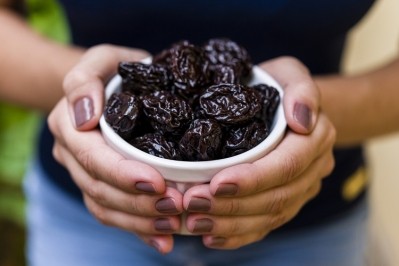Little tummy trends: How are food brands innovating for the next generation?

Children’s food and beverages are a fast-growing market. According to Report Linker, the global sector is poised to reach more than $146bn by 2025, with ‘healthy gains’ adding momentum to its growth.
Indeed, innovation in the sector is high – with particular emphasis on health, according to UK-based ingredient supplier Ulrick & Short.
This include ‘probiotic gummies’, low sugar and low calorie snacks, and the reformulation of children’s juice boxes to flavoured water, in order to reduce overall sugar and calorie content, the company’s head of marketing and communications, Robert Lambert, told FoodNavigator.
London-listed ingredient manufacturer Tate & Lyle is similarly observing food brands innovating product lines for children, with both health, nutrition, and taste in mind.
“These include reduced sugar ketchup and chocolate milk powder; lower calorie, vitamin, and mineral enriched cereal; as well as cereal bars with increased fibre and higher protein,” said Kavita Karnik, global head, Nutrition & Regulatory Affairs, Tate & Lyle.
So, what are the key trends informing these innovations?
Healthy snacking on-the-go
Tate & Lyle, which tracks global consumer food and drink trends, says these are ‘just as applicable’ to children’s food, as they are to adults.
According to the ingredients supplier, healthier snacking is in favour as an ‘important meal occasion’. However, consumers are prioritising the health of their children, explained Karnik.
A study by the International Food Information Council (IFIC) reported that 10% of parents said their child’s diet quality has declined due to the pandemic as a result of increased snacking and reduced access to fresh food.
“However, 31% said their child’s nutrition improved during the pandemic thanks to being able to monitor their eating habits and making more home cooked meals,” she continued.

In snacking, and in other meal occasions, convenience is also a key trend. Consumers with children are often time poor, seeking ease and efficiency from the products they buy, explained Tate & Lyle’s nutrition and regulatory affairs expert.
“Convenient formats and channels meet the needs of global consumers amidst their busier, more stressful lives.”
Clean label and functional ingredients
Clean label, which at its most basic level refers to food products with fewer and more natural ingredients, is also a ‘thriving’ trend in the infant sector, according to Ulrick & Short’s Lambert.
“Increasingly, label transparency has become more of a consideration amongst parents – in turn, driving NPD. Between 2014-2019, clean label claims increased by 67% in the baby meals sector (according to Innova Database) and has now become an expectation rather than the exception amongst the major UK and global brands.”
Label transparency was another trend picked up by Tate & Lyle. “Increasing numbers of consumers are seeking healthy food and beverage products for their children – products they can trust and know the source of the ingredients in them.
“Our research shows that globally, most consumers with children are reading ingredient and nutrition labels – focusing on calories, sugar, vitamins and fat.”
Consumers are not simply demanding the absence of additive and chemically modified products, but much like other sectors, the addition of functional ingredient for enhanced nutritional profiles, such as proteins, vitamins and minerals, said Ulrick & Short’s Lambert.
According to Innova Database, front-of-pack ‘source of’ and ‘high in protein’ claims have ‘boomed’, growing 62% between 2014 and 2019 in baby milk and formula.
“Alongside this growth, nutraceuticals such as choline have also grown in popularity, as well as a greater focus on immune boosting products, such as Vitamin C,” he continued.
Healthy reformulation
Food reformulation, whereby manufacturers reduce the salt and calories from sugar and saturated fat in processed foods, is an overarching trend in the industry, and this is no different in the children’s category.
“Alarming levels of childhood obesity in the UK, coupled with government regulation in the form of HFSS [food high fat, salt or sugar] restrictions coming into force in 2022 have only accelerated the trend,” Lambert told FoodNavigator.
The legislation limits where HFSS products can be placed in bricks and mortar stores and ban marking of such products on TV (pre-9pm) and online.
“Sugar and calorie reduction in the snacking sector is one good example. Snacking has been a growing trend across all age ranges for some years now, to accommodate for busy working schedules, and this trend is even more pronounced amongst children, which have a tendency to eat little and often.
“Both consumers and government regulation are forcing the issue of healthy reformulation for manufacturers – specifically calorie and sugar reduction, which in turn is driving NPD,” said Lambert.

Tate & Lyle has also picked up on the healthy reformulation trend, and in the children’s food category, stressed that sugar reduction was of particular importance.
“Consumers want their children to get healthy and stay healthy. To achieve better health, they know one option is to reduce the amount of sugar in their diet,” said the company’s Karnik.
“However, consumers are torn between reducing sugar and mainlining great taste. From our research, we know that 70% of global consumers in households with children agree that non-artificial sweeteners are a solution.”
Crystal ball gazing into the future
Looking to the future, how do these ingredients players expect the health trend in kids’ food to continue?
In the short to medium term, Ulrick & Short expects HFSS regulation to ensure the focus is on calorie, fat, sugar and salt reduction, as well as increasing the amount of fruit, vegetables and fibre in products,
In the longer term, however, Lambert expects the emphasis to switch to functional health.
“As consumer knowledge increases, value added ingredients aimed at actively enhancing nutritional profiles & enhancing mood/mental state will continue to grow - for instance, brain or gut health.”
From Tate & Lyle’s perspective, the consumer desire for healthy food for children is set to continue, as parents come more open to looking at ways to close nutritional gaps, particularly when it comes to improving gut health with fibre fortification.
The ingredients supplier told us it is also likely the packaging of children’s food and beverages will adapt, to ‘overcome confusion’ around ingredients. This, Karnik said, will allow parents to complement fresh fruits and vegetables with other healthy snacks.
“As children usually have a say in the snacks they want, snack manufacturers will need to appeal to them while helping parents address health issues.”

































